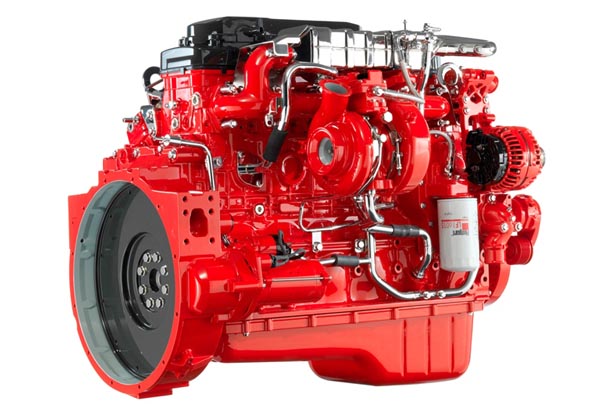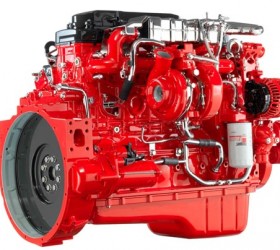Cummins’ latest ISB engines have now been certified to the Euro 6 standards, ready for January 2014. These engines have met all of the stringent levels of particulate matter and oxides of nitrogen when measured on the World Harmonised transient and steady state test cycles. The more challenging on-board diagnostics (OBD) regulations have also been achieved.

Available from 150 to 310 ps, the ISB engines are ideal for single and double deck buses and coaches. They use the proven engine technologies of cooled exhaust gas recirculation (EGR) and variable geometry turbocharging (VGT), tailored for European vehicle design and operations. The engine technologies are matched to the aftertreatment system, designed and manufactured by Cummins Emission Solutions. It combines a Diesel Particulate Filter (DPF) with Selective Catalytic Reduction (SCR) to meet the ultra-low levels of emissions.
The successful certification is a result of the 3 year ISB Euro 6 development programme. A key part of the plan has been to prove they operate successfully in extreme hot and cold climates. Engineers carried out more than 30,000 km of product validation in challenging vehicle operating conditions in Spain and Scandinavia to ensure emissions compliance. Ambient temperatures ranged between 35C and -29C during the tests, which also took the vehicles to altitudes of more than 2000m.
Jonathan Atkinson, Chief Engineer of Product Development said: “Our testing has successfully validated Cummins hardware and control strategy for Euro 6 in extreme temperatures.”
It has proven that the upgraded Euro 6 OBD system would not generate unnecessary fault codes that could limit vehicle operation in these difficult climates. This has been an important step in our development programme, ensuring that Cummins Euro 6 package delivers for all vehicle users, wherever they operate, continued Atkinson.
The testing involved advanced telemetry, measuring and recording more than 1300 engine and vehicle parameters on a real time basis. Engineers were able to send data via GSM equipment back to the Darlington Technical Centre every hour for review and analysis by functional specialists. After validating findings and identifying solutions in the lab, the test team were then able to make focused adjustments and modifications to the engine and after treatment system to further optimise performance.
”The after treatment system provided more of a challenge than at previous emissions levels, as it has to be kept within a specific temperature band to operate efficiently. This is achieved through advanced control strategies which manipulate the engine hardware and combustion strategy to maintain exhaust temperatures in the optimum range, whilst delivering the best possible fuel efficiency,” concluded Atkinson.
For Euro 6, the 4-cylinder ISB4.5 engine is available up to 210 ps. It has an excellent power to weight ratio and delivers a strong peak torque of 760 Nm. The 6-cylinder 6.7 litre ISB engine extends up to 310 ps for coach installations, and 280 ps for bus applications. Peak torque is at a high level of 1100 Nm.
Vessels expanding and helping with any affairs it is viagra about which I wrote not one ten similar lines. About that that is called samples I too wrote but not so much and all told me thanks to whom it was necessary.





